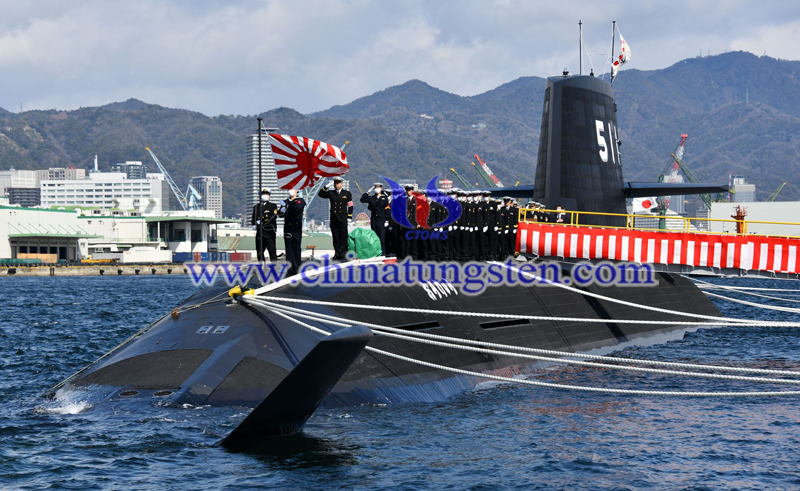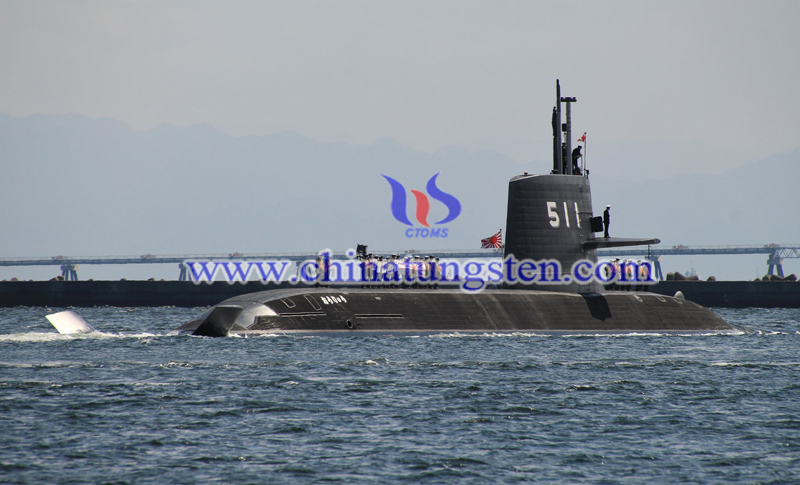Japan Commissions First Soryu-Class Submarine Running on Li-Ion Batteries
- Details
- Category: Tungsten's News
- Published on Wednesday, 11 March 2020 20:45
The first Soryu-class diesel-electric attack submarine (SSK) SS-511 "Phoenix Dragon" equipped with Li-ion batteries has been commissioned by the Japan Maritime Self-Defense Force (JMSDF) in a ceremony held at the Mitsubishi Heavy Industries (MHI) facility in Kobe, in Hyogo Prefecture in west-central Japan on March 5. It is also the world's first conventional sub to replace traditional lead-acid batteries with a lithium battery.

According to the British Jane's Defense Weekly, the "Phoenix Dragon" is the world's largest conventional power sub Soryu-class. It uses the latest lithium-ion polymer battery developed by Yuasa Technology Co., Ltd. as the power source which replaces the "Air-independent propulsion" (AIP) system for lead-acid batteries. As the energy density of lithium-ion polymer batteries is several times higher than that of lead-acid batteries, as well as two times more in the battery capacity, so the " Phoenix Dragon" owns a longer underwater diving time.
The Phoenix Dragon is 84 meters long, with a standard displacement of 2950 tons and a speed of about 20 knots in water. The sub's construction began in November 2015 at a cost of 66 billion yen (about 580 million US dollars). Compared with the appearance of other Soryu-class submarines, the look of the Phoenix Dragon is not significantly different, but its speed and continuous submersible capabilities have been greatly improved, which means that the sub processes stronger combat capability.

The keel for the first submarine in the class, Soryu (SS-501), was laid down in March 2005. It was launched in December 2007 and commissioned in March 2009. The latest Soryu class SSK joint the fleet is SS-510 JS Shōryū which was commissioned on March 18, 2019. The 12th and final sub SS-512 JS Tōryū was launched in November 2019. Twelve Soryu-class submarines are currently planned for the JMSDF.
The design features improved underwater endurance thanks to lithium-ion batteries from the eleventh submarine in the class. Previous subs use lead-acid batteries. Designed by GS Yuasa, the high-performance Li-Ion batteries are said to store about double the power. The last two subs of the class, fitted with the new battery technology, will probably serve as test-bed for the next generation of Japan’s SSK.
Compared with lead-acid batteries, Li-ion batteries not only hold significant advantages in terms of battery life but also are more environmentally friendly, which are less pollution to the underwater environment and are more conducive to the recycling of energy.
- Rare Earth Manufacturer & Supplier, Chinatungsten Online: www.chinatungsten.com
- Tungsten News & Prices of China Tungsten Industry Association: www.ctia.com.cn
- Molybdenum News & Price: news.molybdenum.com.cn
- Tel.: 86 592 5129696; Fax: 86 592 5129797; Email: sales@chinatungsten.com



 sales@chinatungsten.com
sales@chinatungsten.com